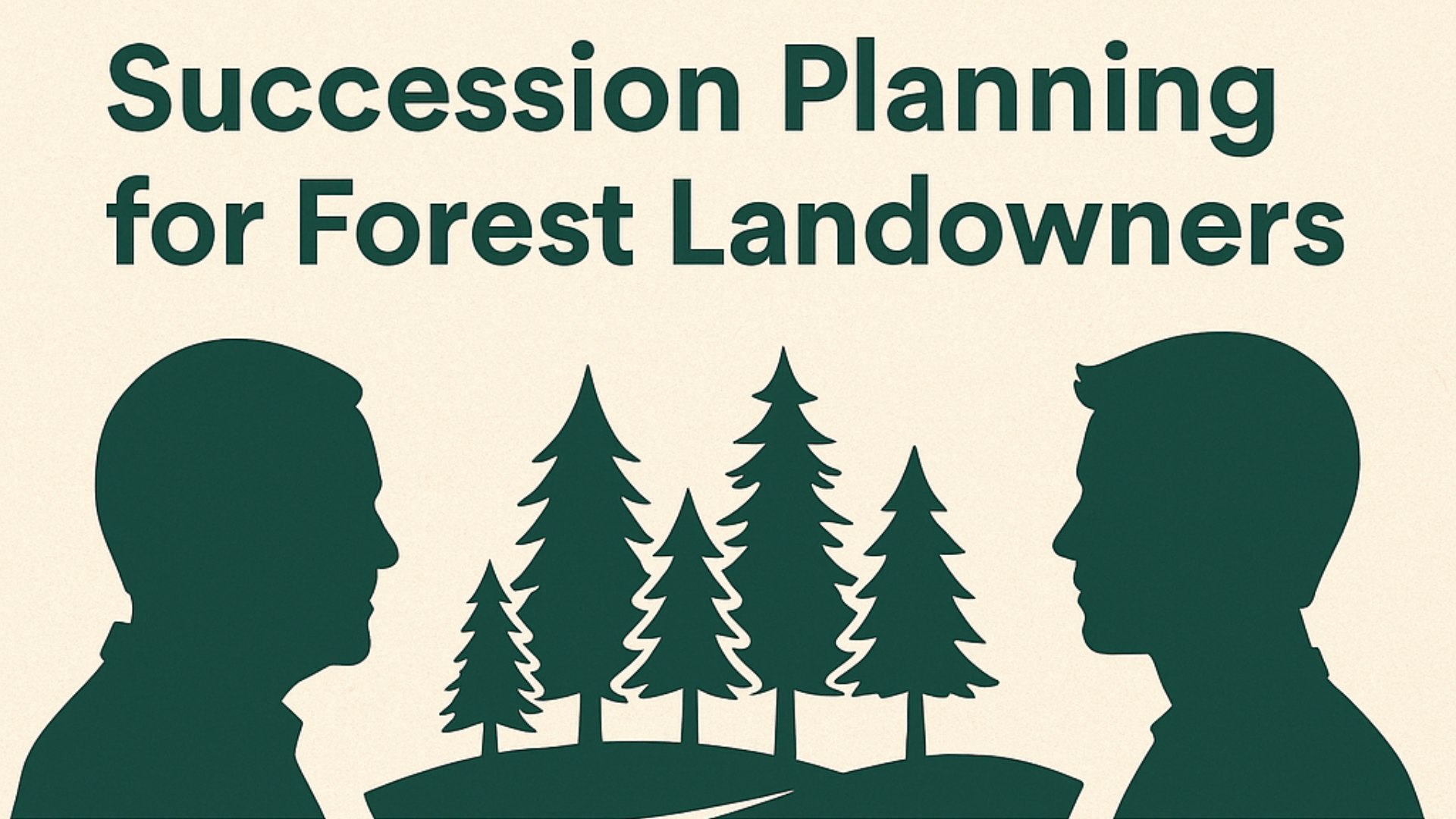AFM NEWS
Succession Planning for Forest Landowners: How to Protect Your Land and Legacy

For many forest landowners, the land is more than just an asset—it's a family legacy, a source of pride, and a commitment to stewardship. Yet without a clear succession plan in place, even the most carefully managed forest can become the source of confusion, conflict, and unintentional consequences for the next generation.
Succession planning ensures that your forestland—and the values you’ve attached to it—pass to the right people in the right way. Whether your goals are to keep the land in the family, ensure sustainable management, or preserve its economic and ecological value, taking proactive steps today can protect your legacy for generations to come.
What Is Succession Planning for Forest Landowners?
Succession planning refers to the process of passing on the ownership and management of your land to future generations or other heirs. It includes both estate planning (the legal and financial aspects of transferring assets) and legacy planning (communicating your values, wishes, and management philosophy).
According to experts at NC State Extension Forestry, the lack of a formal plan can lead to unintended sales, unmanaged forestland, or family disputes—consequences that often undo decades of stewardship.
Why It Matters
Forest landowners face unique succession challenges:
Tied Wealth: Much of the landowner’s wealth is tied up in the forest, making equal distribution among heirs difficult.
Land Fragmentation: Without clear planning, land may be subdivided or sold off, making sustainable management harder.
Heir Interest & Expertise: Not all heirs may want or know how to manage forestland.
Estate Taxes: Large landholdings may trigger estate taxes that force heirs to sell portions of the land to cover liabilities.
As highlighted by the National Woodland Owners Association and American Tree Farm System, only about 30% of forestlands successfully transition to the second generation, and only 12% to the third. Proper planning increases those odds dramatically.
Key Steps in a Forest Succession Plan
1. Define Your Long-Term Vision
Start by asking yourself:
What do I want to happen to this land after I’m gone?
Who among my heirs is most interested or capable of managing it?
Do I want to preserve it as a single tract or allow it to be subdivided?
A shared vision among family members is often more important than specific legal tools. The Virginia Cooperative Extension emphasizes open family dialogue as one of the most powerful tools in succession planning.
2. Build Your Team
You don’t need to do this alone. A successful plan often involves:
A forester to evaluate the land’s productive and conservation potential.
An attorney to draft wills, trusts, and deeds.
A financial advisor or CPA to help with tax strategies.
A facilitator or mediator to guide family conversations.
3. Understand Your Legal Options
Per the U.S. Forest Service’s estate planning guide, key tools include:
Wills: Essential for naming beneficiaries and preventing intestate distribution.
Trusts: Can shield land from taxes, allow professional management, and provide income to multiple heirs.
LLCs or Family Limited Partnerships: Useful for shared ownership with clearly defined roles, transfer options, and control provisions.
Conservation Easements: Reduce land value for estate tax purposes and ensure land remains forested in perpetuity.
4. Prepare the Next Generation
Heirs need both legal ownership and management readiness. Involve them early in:
Forest management planning
Attending tree farm meetings or workshops
Learning about local, state, or federal forest programs
This builds a sense of ownership and responsibility, reducing the risk that heirs will sell the land out of disinterest or confusion.
Common Pitfalls to Avoid
Procrastination: It’s never “too early,” but it can be too late. Unexpected illness or death can create chaos.
Assumptions: Don’t assume your heirs know your wishes—or want the land.
Equal vs. Fair: Treating heirs equally in financial value may not be fair when it comes to land. Consider different gifts (e.g., life insurance, other assets) for non-interested heirs.
Resources to Help You Get Started
Final Thoughts
Succession planning is one of the most meaningful steps you can take as a forest landowner. It protects not only your land and investment—but also your family and values. By starting the conversation, seeking professional help, and creating a written plan, you ensure that your forest legacy continues to thrive for generations to come.

